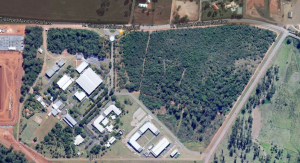The event will be held at the premises of the Brazilian Synchrotron Light Laboratory (LNLS), located at the Brazilian Center for Research in Energy and Materials (CNPEM) in Campinas, São Paulo. The city of Campinas can be reached from São Paulo Guarulhos International Airport in approximately 1 – 1.5 hours by bus or car.
Address: Rua Giuseppe Máximo Scolfaro, 10.000 – Guará Campinas – SP, Brazil CEP: 13083-100 |
CNPEM
The Brazilian Center for Research in Energy and Materials (CNPEM) is a private nonprofit organization located in Campinas, Brazil, which is funded by the Ministry of Science, Technology & Innovation (MCTI). It is dedicated to cutting-edge research in materials, nanosciences, life sciences, physics, and chemistry through four National Laboratories: Synchrotron (LNLS), Biosciences (LNBio), Bioethanol (CTBE) and Nanotechnology (LNNano). The four laboratories are open facilities for external users and companies, from Brazil and abroad. They also have teams of researchers to provide support for projects, as well as to conduct joint research programs in biomass, green chemistry, drugs and cosmetics development, characterization of advanced materials, catalysts, etc.
LNLS
The Brazilian Synchrotron Light Laboratory (LNLS), located in Campinas, at São Paulo state, operates the only synchrotron light source in Latin America, providing high brilliant light from infrared to X-rays for the analysis of organic and inorganic materials. Designed and built with Brazilian technology, LNLS was inaugurated in 1997 as an open facility to the scientific and industrial communities across the country and abroad.
LNLS is currently engaged in the development and construction of Sirius, the next Brazilian synchrotron light source. It is planned to be a state of the art fourth generation machine, designed to be one of the most advanced in the world. Its ultra-low emittance and thus high brightness will open up new perspectives for research in many fields such as material science, structural biology, nanoscience, physics, earth and environmental science, cultural heritage, among many others. It is scheduled to start commissioning in 2018 and to be opened to users in 2019.
Campinas
Campinas is a city located in the heart of São Paulo, the most developed state in Brazil. It has an average altitude of 680 meters above the sea level. It is about 100 km far from the city of São Paulo, the main financial center of Brazil. Campinas has been living its best moment since years, regarding its economic and social performances. Considering the 500 biggest global companies, 50% has branches in its metropolitan area. Campinas surprises people by having a great quality of life. With more than 1 million inhabitants, this City has a diversified trade, large green areas and lots of opportunities for leisure, sport and culture. It is recognized as the Brazilian capital of Science, Technology and Innovation, with the major national centers of R&D and the university that produces more patents in Brazil, Unicamp (University of Campinas). It also has the only synchrotron light source in Latin America, which is operated by the Brazilian Synchrotron Light Laboratory (LNLS), part of the CNPEM. The climate is tropical but mitigated by elevation (Köppen type Cwa), with lower rainfall in winter and an annual average temperature of 21.3 °C. Winters are generally dry and mild, and summers rainy with warm to hot temperatures. The warmest month is February, with an average temperature of 24°C, an average maximum of 29.1°C and average minimum of 19.0 °C. The coldest month, July, sees respective temperatures of 17.8°C, and 24.2°C and 11.4°C average maximum and minimum. Fall and spring are transitional seasons.
